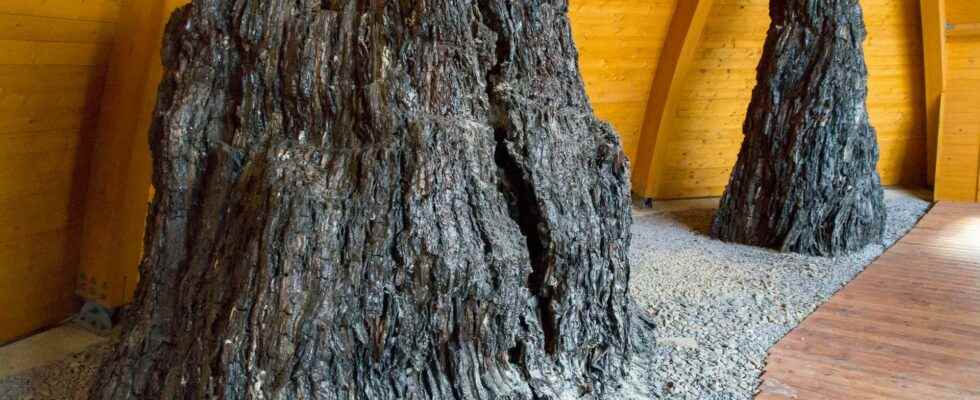You will also be interested
[EN VIDÉO] Interview: How are dinosaur fossils formed? Fossils are the only remains of dinosaurs to have survived to our time. It is from these remains that scientists can hope to understand these ancient animals. Futura-Sciences interviewed Éric Buffetaut, paleontologist, to find out more about their training.
Pompeii, famous for its exceptionally preserved Roman remains, is not the only site to have been “frozen” in time by a volcanic eruption. If the ancient city still reveals to us today countless archaeological treasures which help to understand the civilization of ancient Romeother sites buried under the ash allow scientists to cast a eye in the past and observe a photography of what life was like Earth several million years ago.
This is the case of Ipolytarnóc. Referred to as “ancient Pompeii”, this site fossil is located in the north of Hungary. Buried under a thick layer of volcanic deposits, Ipolytarnóc shows us what the fauna and flora looked like in this region of the world 17 million years ago. Just like the city of Pompeii and the eruption of Vesuvius in the year 79Ipolytarnóc experienced a sudden volcanic disaster that literally petrified the site and its ecosystemallowing us today to observe an environment of the Mioceneextremely well preserved.
A coastal and subtropical environment subject to violent explosive eruptions
The locality of Ipolytarnóc is located in the Pannonian basin, or plain of Pannonia, in central Europe. This plain is now bordered to the north and east by the Carpathian chain, to the west by the Alps, and to the south by the Dinaric Alps. It is a region subject to a complex context of convergence of tectonic plates, in connection with the geodynamics of the Mediterranean. This kind of tectonic context is often associated with large volcanic eruptions. In the Miocene, about 17 million years ago, the Pannonian basin was thus the site of several large explosive eruptions of the silicic type.
This type of rash produces significant volumes volcanic deposits (ignimbrites, pyroclasts) that cover the landscape over tens of thousands of square kilometres, invariably impacting ecosystems.
In the Miocene, the site of Ipolytarnóc was at the level of a archipelago surrounded by the epicontinental sea Paratethys, which then occupied a good part of Europe. the climate was of the subtropical type, with rich and dense vegetation. It is in this context that a violent volcanic eruption took place which, however, has never been correctly characterized.
In a study published in the journal Scientific Reportsscientists from Eötvös University in Budapest sought to detail the course of events and the characteristics of the explosion that led to the petrification of the Ipolytarnóc site.
A very violent explosion associated with a cold pyroclastic flow
The site was discovered in the early 19the century. It is exceptionally rich in plant fossils and tree trunks.trees (conifers, palm trees…) with in particular a petrified trunk whose original height was estimated at more than 100 meters high. The oldest sedimentary units contain traces of a coastal environment with numerous fossils of molluscs, shark teeth and corals.
Many animal footprints are also visible: large predators, birds, rhinoceros… making the site a world reference in matter. However, these traces and fossils date back well before the disaster that devastated the region. They nevertheless owe their excellent preservation to him.
According to researchers who have studied the site, the eruption responsible for this disaster took place around 17.2 million years ago. The volcano at the origin of this eruption would be located 80 km from Ipolytarnóc. Calculations based on the thicknesses of volcanic sediments observed make it possible to estimate the volcanic explosivity index (VEI). It would be greater than 7, which is the value set for Santorini eruption during the age of Bronze and which would have led to the fall of the Minoan civilization.
The violence of this explosion would be linked to the presence of water in the volcanic conduits, producing a first phase eruptive of the phreato-magmatic type accompanied by a powerful pyroclastic flow which devastated the entire region in just a few minutes. However, unlike the real Italian Pompeii, this pyroclastic flow would have been rather cold, seat trees but allowing the escape of animals, of which no remains dated from the eruption have been found on the fossil site.
After a break of duration undetermined, a second eruptive phase came to cover the site with large volumes of ash (up to 40 meters thick), sealing it for several million years.
Interested in what you just read?
